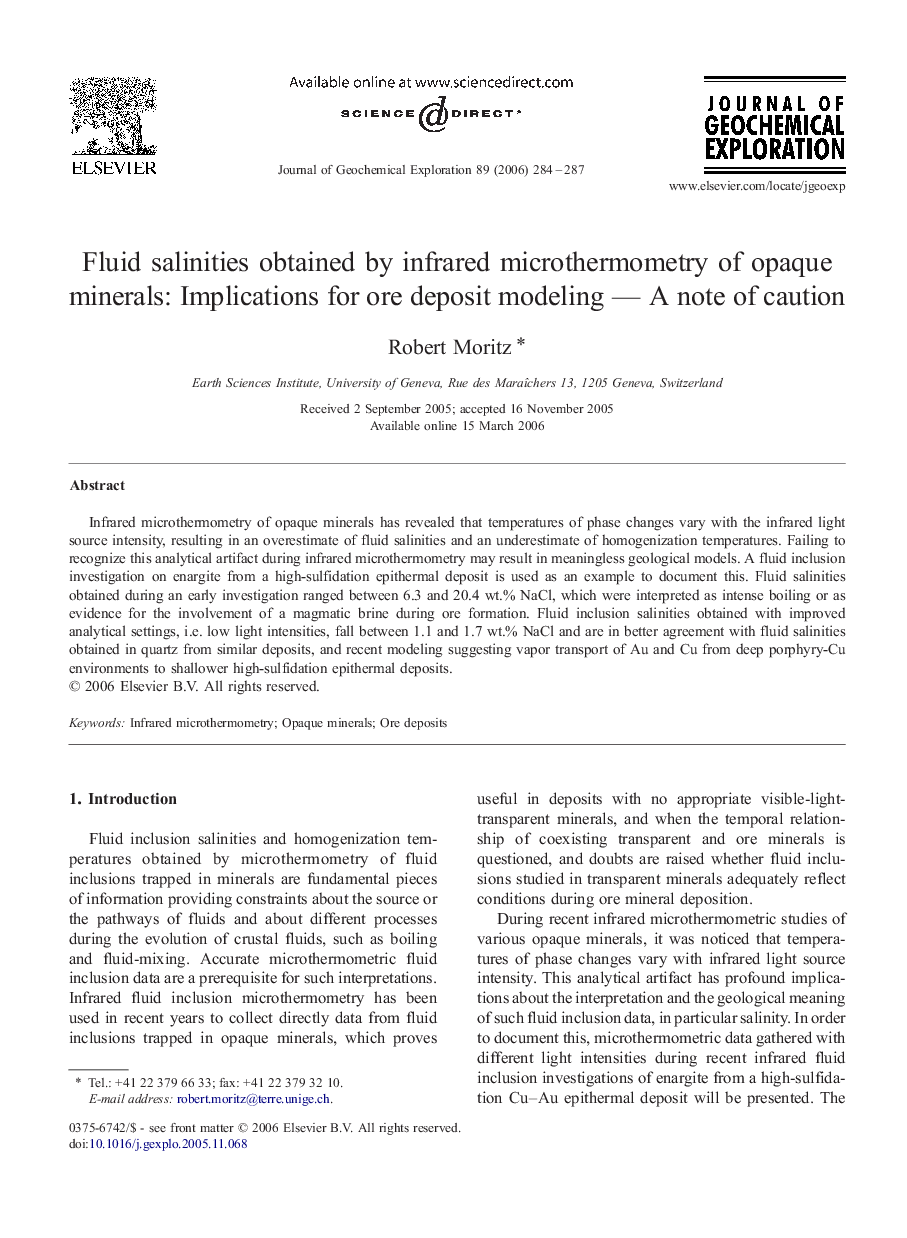| Article ID | Journal | Published Year | Pages | File Type |
|---|---|---|---|---|
| 4458471 | Journal of Geochemical Exploration | 2006 | 4 Pages |
Infrared microthermometry of opaque minerals has revealed that temperatures of phase changes vary with the infrared light source intensity, resulting in an overestimate of fluid salinities and an underestimate of homogenization temperatures. Failing to recognize this analytical artifact during infrared microthermometry may result in meaningless geological models. A fluid inclusion investigation on enargite from a high-sulfidation epithermal deposit is used as an example to document this. Fluid salinities obtained during an early investigation ranged between 6.3 and 20.4 wt.% NaCl, which were interpreted as intense boiling or as evidence for the involvement of a magmatic brine during ore formation. Fluid inclusion salinities obtained with improved analytical settings, i.e. low light intensities, fall between 1.1 and 1.7 wt.% NaCl and are in better agreement with fluid salinities obtained in quartz from similar deposits, and recent modeling suggesting vapor transport of Au and Cu from deep porphyry-Cu environments to shallower high-sulfidation epithermal deposits.
